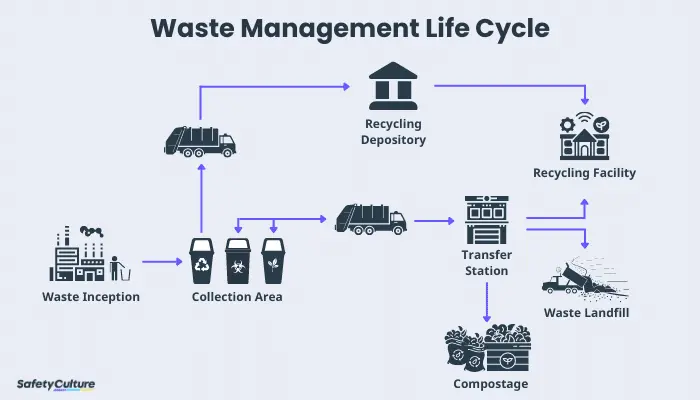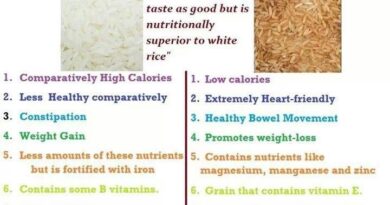Solid Waste Management: A Cleaner World -24
Solid Waste Management
An ever-more-important component of urban planning and environmental care is solid waste management. The amount of trash produced has increased due to the growth of industrial activity and the global population, posing serious threats to human health and ecosystems.
Solid waste is an umbrella term for a variety of abandoned materials, such as building debris, industrial byproducts, commercial refuse, agricultural waste, and home garbage.
The methodical control of operations pertaining to the creation, storage, gathering, transportation, processing, and disposal of solid waste is necessary for effective solid waste management. The principal aims are to optimize resource efficiency and reduce the harmful effects of waste on the environment and human health.
This comprehensive strategy encompasses tactics including composting, recycling, trash reduction at the source, and the secure disposal of non-recyclable material.
It is impossible to overestimate the significance of solid waste management. Negligent waste management can cause serious environmental problems, such as soil contamination, water and air pollution, and an increase in disease-carrying rodents and insects. Furthermore, ineffective waste management systems can put a pressure on infrastructure and municipal resources, resulting in financial hardships and a decline in quality of life.
Municipalities and governments all over the world are embracing integrated waste management systems—which blend cutting-edge recycling and waste-to-energy technology with conventional disposal techniques—in an effort to address these issues.
The success of waste management systems is greatly influenced by individual actions and behaviors, so public awareness and community involvement are equally essential.
What is solid waste management?
The systematic administration of tasks that enable the collection, source separation, storage, transfer, processing, treatment, and disposal of solid waste is known as solid waste management. The intention is to lessen the negative impact that trash has on the ecosystem and public health.
Follow our Digiknowledge.co.in page for the latest updates about technology, bikes, cars, sports, lifestyle, and many more.
How is solid waste produced?
Several human activities result in the production of solid waste, such as:
- Domestic waste includes items like leftover food, packaging, used clothes, and malfunctioning gadgets.
- Commercial: trash produced by companies, such as packaging, office supplies, and leftover meals from restaurants.
- Industrial: waste metal, chemicals, and extra raw materials that are produced as byproducts of manufacturing processes.
- Agricultural waste includes leftover crop waste and animal dung from farming operations.
- Building debris, such as metal, wood, and concrete, is referred to as construction and demolition debris.

What Are the Disadvantages of Solid Waste Management?
Although solid waste management is essential, there are certain drawbacks as well:
- High Costs: Putting in place and keeping up with solid waste management systems can be costly.*
- Impact on the Environment: Pollution from improper waste management can harm the quality of the air, water, and soil.*
- Health Risks: Ineffective waste management can lead to infections carried by vectors and respiratory disorders, among other public health concerns.*
- Land Use: Significant amounts of land are needed for landfills, which could be put to better use.
How do we reduce solid waste?
Several tactics are needed to reduce solid waste:
- Reducing waste at the source by selecting reusable items and products with little packaging.*9
- Recycling is the process of turning resources like metal, glass, and paper into new goods.*
- Composting is the process of transforming organic waste—such as leftover food and yard waste—into nutrient-rich compost.*
- Laws and Policies: Enacting measures to promote recycling and waste minimization.
What is the Biggest Problem in Solid Waste Management?
The disposal of non-biodegradable materials is one of the main issues with solid waste management. For instance, plastics greatly contribute to environmental degradation and take hundreds of years to degrade. The task at hand is to identify efficient strategies for controlling and minimizing plastic trash.
How effectively can solid waste be managed?
The following approaches can be used to manage solid waste effectively:*
- Systems for managing waste that combine many techniques, such as composting, landfilling, and recycling, into a single, coherent system
- Disseminating information to the public regarding appropriate disposal techniques and trash minimization
- Technological Advancements: Creating Novel Methods of Recycling and Treating Garbage
- Government Policies: Enforcing laws that support environmentally friendly methods of disposing of waste.
What Are the Limitations of Solid Waste Management?
Solid waste management has various drawbacks in spite of its advantages:
Resource Constraints: The deployment of thorough waste management systems may be hampered by a lack of funding and manpower.
Technological Gaps: Some places might not have access to cutting-edge methods of treating trash.
Behavioral Difficulties: Attempts to reduce waste may be hampered by public indifference or opposition to change.
Problems with infrastructure: Ineffective trash collection and disposal can result from inadequate infrastructure.
How do I minimize solid waste?
There are several ways to minimize solid waste:
- Choosing durable products and minimizing packaging is an example of sustainable consumption.
- Recycling and non-recyclable garbage should be separated at the source through waste segregation.
- Fostering a system in which goods are recycled, repaired, and reused is known as “supporting the circular economy.
- Initiatives for the community: taking part in or planning neighborhood recycling and clean-up campaigns.
What Are the Benefits of Solid Waste Management?
Good solid waste management has several advantages.
Protection of the environment: lowers pollution and protects natural resources.
Enhances Public Health: Reduces Health Risks from Waste Accumulation and Improper Disposal.
Economic Gains: Can lower waste disposal costs and create jobs in the recycling and waste management sectors.
Resource conservation lessens the need for extracting raw materials by promoting material reuse and recycling.
Conclusion
Governments, corporations, communities, and individuals must work together to manage solid waste, which is a complicated but necessary procedure. We can lessen the negative effects of solid waste and work toward a more sustainable and hygienic environment by comprehending the difficulties and putting good methods into practice.
We can make sure that future generations inherit a cleaner and more sustainable planet by fostering innovation, education, and teamwork.




